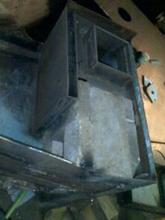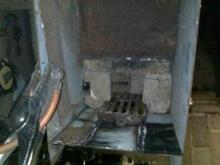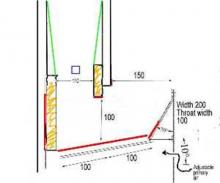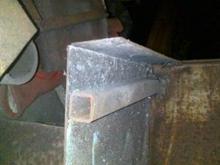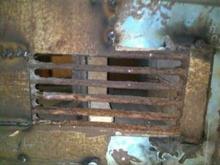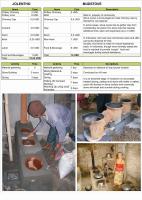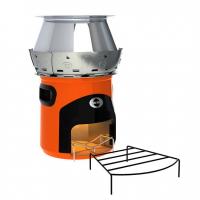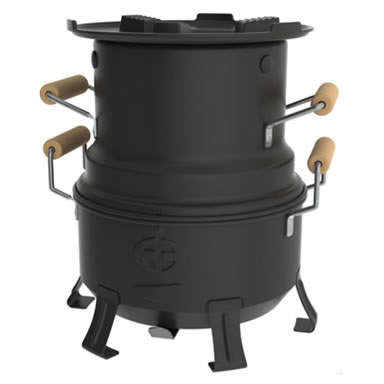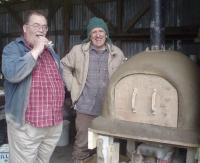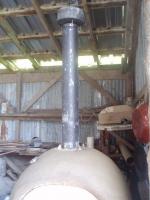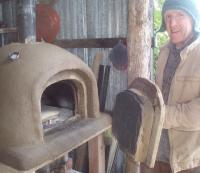I've attached a diagram of how I'm now planning to build the grate and throat area. (I took the liberty of modifying the GIZ diagram Crispin kindly sent to explain an appropriate layout)
As I'm only going to be burning wood and in my experience of wood stoves all the wood burns to a light ash which would easily fall through the grate I am planning to have a stationary grate. Am I making the wrong decision here?
--- next email --
Getting close to completing this stove now.
Some photos are attached.
I've also attached a drawing of how things stand now (not to scale)
The door and hatch are made and have fire rope seals. These will be fitted once everything else is together.
I've used a cast iron grate from an old coal stove that was the perfect size.
A couple of things I'm wondering
*At the moment all the secondary air is going in through some square section pipe with an internal diameter of 20x20mm that enters at the rear of the combustion chamber above the ceramic blocks. (shown as blue square in stove2-7.jpg). Is this going to supply enough air or should I put a similar sized secondary air inlet on the front of the stove also?
*Crispins GIZ design has an area where the combustion chamber tapers wider (an expansion chamber?). I've drawn this in green in stove2-7.jpg . How important is this? I could make these sloping walls from sheet steel or I guess buy some refractory material sheets (my x partner who is making this with me had some jewellers heat mats that would appear suitable although she appeared reluctant to give them up) Is this a crucial detail? What effect does it have on combustion? what would happen if I leave them out?
Thanks in advance for any pointers. Hopefully I should finish and test fire it in the coming week.
Dear Friends
Further to Darren’s efforts, a reminder that the original drawings for the combustor and one of the stoves that incorporates it is in the Library at New Dawn Engineering at the very much enlarged (this week) website. That is not to say there is so much there, just that we can now make very large files such as high-res video originals available. As time passes more will be available.

